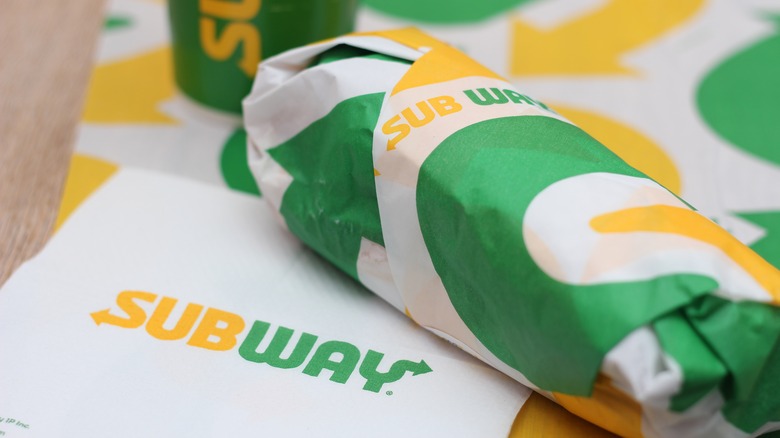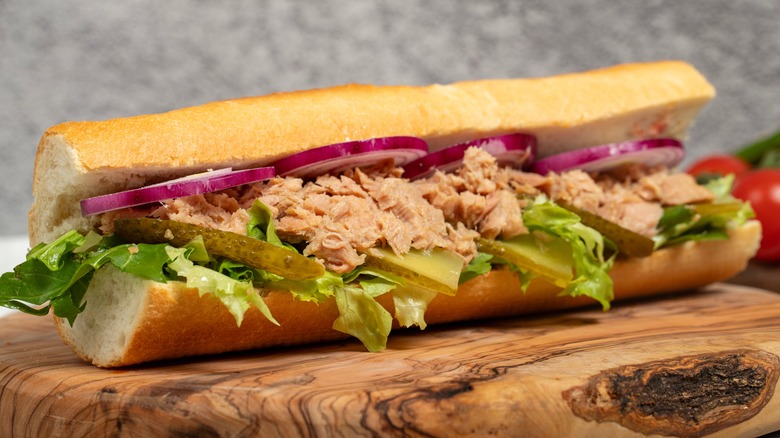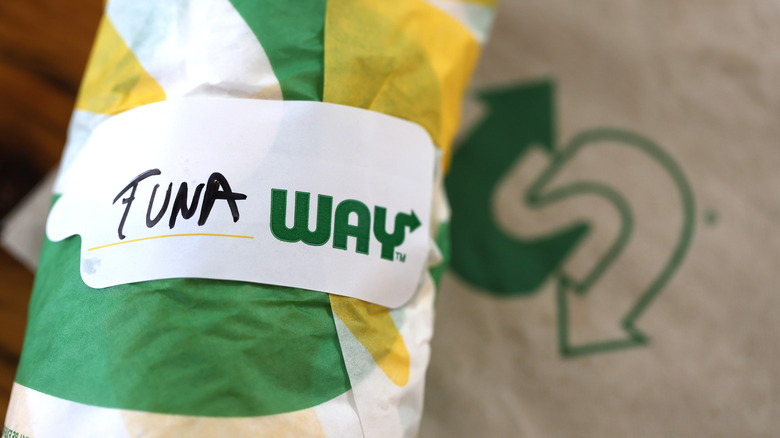What's Really Hiding Inside Subway's Tuna
In 2021, fans of Subway sandwiches were shocked when fellow customer Nilima Amin filed a lawsuit in California alleging that the chain's tuna sandwiches contained absolutely no tuna. This left many consumers scrambling to find the best canned tuna brands so they could get their fix at home in lieu of paying a visit to the ubiquitous sandwich shop (which, despite courting controversy, doesn't seem to be in any danger of experiencing a Quiznos-like downfall).
However, Subway was quick to defend itself, stating in a press release that the claims had no merit and that the tuna sold in its restaurants is wild-caught skipjack and yellowfin. Still, when The Washington Post broke the story, there was no going back, and the question of what's really hiding inside Subway's tuna remained. However, there appears to be nothing to fear for Subway tuna fans, as one of the leading DNA labs in the United States conclusively found that Subway is serving up the real deal (via IEH). So, fans of the sandwich chain's tuna can order their melts and subs with confidence.
Conflicting lab results caused confusion
In June 2021, a few months after Nilima Amin filed her lawsuit, New York Times journalist Julia Carmel visited three Subway locations and had her tuna sandwich samples sent to a lab for testing. A month later, the results came back, and the lab was unable to find any tuna DNA present in the sandwich's contents. However, in February 2021, "Inside Edition" ran a similar test with Applied Food Technologies, a lab with more advanced equipment, and all three of its samples returned positive as tuna. So, which test was right?
The lab that ran the tests for The New York Times admitted that the lack of tuna DNA in their tests could be the result of heavy processing that made identification impossible. Soon after these results, Inside Edition re-opened its investigation, sending in more samples to Applied Food Technologies, which were again identified as tuna. To conclude its new investigation, Inside Edition addressed the Times' findings by stating that the lab most likely didn't have the right technology to identify tuna DNA, as Applied Food Technologies has a monopoly on accurately testing small, processed tuna samples in the United States.
It should also be noted that Amin, the plaintiff in the original case, filed a third amended lawsuit in 2022, changing her claims from alleging no tuna in the sandwiches to them not being 100% tuna (via Courthouse News). She then dropped the case entirely in April 2023, and Subway responded by seeking more than $600,000 in attorney fees.
Is there really tuna in Subway's tuna salad?
While it's easy to make unforgettable tuna salad at home, ultimately, there is no reason to stay away from Subway tuna sandwiches. Especially since the scandal appears to have been blown out of proportion.
If you're not convinced, consider that Applied Food Technologies, the lab that confirmed Subway was selling tuna, was given a National Institute of Food and Agriculture grant by the U.S. government specifically to develop definitive markers to identify species used in canned tuna. AFT is easily the leader in its field, specializing in seafood species identification, so its conclusion carries a lot of weight.
Overall, Subway remains one of the largest fast food chains in the world, and the tuna controversy has done little to change things despite Subway's complaints to the contrary. If you're in the mood for a tuna salad sandwich right now, you can use some nifty Subway ordering hacks to get the most bang for your buck.


